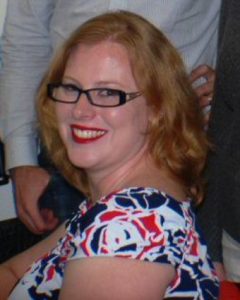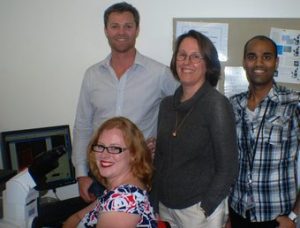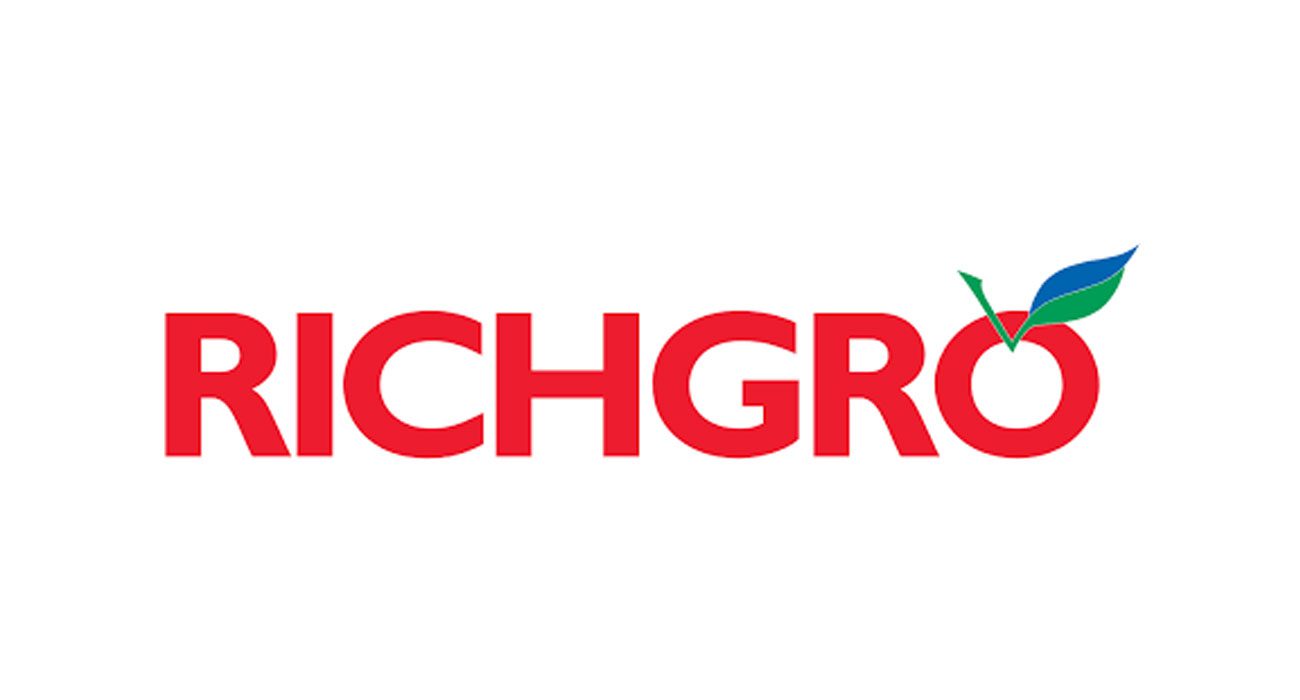Grants
Grants – Working with UWA, The Amanda Young Foundation has provided grants to assist with research into Meningococcal Disease
As I begin wrapping up, writing up, publishing and presenting the work I have completed and compiled over the past three years, I reflect on what has been a very busy yet fruitful period.
I began my PhD in Dr Charlene Kahler’s laboratory in 2007 with the general aim of elucidating aspects of how the meningococcus gains entry into the host epithelium, or said more simply “How does the bacterium get into the cells of our throat?”
From the perspective of a molecular microbiologist, the meningococcus is a tricky little bug. It can change the way it looks simply by replicating and it does this by turning on and off different molecules when it divides. Different strains of Neisseria meningitidis can turn on and off different molecules and at different rates. By looking closely at the information gathered by other researchers over the past 20 years we found that their explanation for how the bacteria enter our cells was that it randomly turns on and off these molecules, then one bacterium with the right set of molecules can get in.
However we identified an inconsistency in that some strains of N. meningitidis can only turn a few of these molecules on and off and at very slow rates, yet these strains are responsible for large disease outbreaks across Europe. These sets of strains are very good at causing disease, yet they are unable to express the set of molecules thought to be the “right” combination to cause disease.
So the question arose, “How do they do it?”

The most common molecule on the surface of the meningococcus is a relatively simple sugar chain, called lipooligosaccharide (lipo- it is bound to the bacterial cell wall by a lipid, oligo- one unit [as opposed to E. coli which has many repeating units and is called poly], saccharide-sugar, so it is a single chain of sugar bound to the bacterial cell wall by a lipid).
The composition of this molecule, that is the precise sugars which make it, varies between strains and the role of this molecule in the invasion of the bacterium into our cells had not been investigated, so we decided this was the best place to look.
To cut three years of fairly complex genetics, mutations, clonings and testings short, not to mention the ups, the downs, the tantrums and the happy dances when these things finally work, I will fast forward to the end.
We found that the structure of this sugar molecule on the surface of the bacterium plays a huge role in the ability of the bacterium to invade into our cells, over-riding all the other molecules that some strains can turn on and off. The bacteria can sense when it comes in contact with our cells and it can change the structure of this molecule without replicating.
Our work suggests this sugar molecule binds to a receptor on our cells, telling our cells to let the meningococcus in. This has led us to propose a new model for understanding how the meningococcus gains entry into our cells which may impact on vaccine development in the future.
This finding has been well received in the research community. This work has been selected for presentation at many local, national and international meetings and I have been privileged to receive many awards based on this work, including the UWA convocation travel award in 2008, the Millis-Colwell Award to present this work at the American Society for Microbiology in Philadelphia in 2009 and the Becton Dickenson award to present this work at the Australian Society for Microbiology meeting in Sydney 2010.
In addition this work has been selected for an oral presentation at the International Pathogenic Neisseria Conference to be held in Banff, Canada in September 2010.
At this point I would like to thank the Amanda Young Foundation for their generous support over the past three years, without them I would have been unable to start a PhD. I hope to continue working in this field for years to come, finding more answers to how this tricky bug gains access to our bodies.
If you wish to put forward a proposal please contact Barry and Lorraine Young.
The Amanda Young Foundation is supporting a research project in the laboratory of Dr Charlene Kahler at UWA that plans to uncover the epidemiology of Neisseria meningitidis in Western Australia.
Our plan is to collect over 200 meningococcal isolates over the past 13 years and to perform whole genome sequencing of the strains. This sequencing information will tell us a great deal about whether the strains are related to one another, whether they appear consistently over time in Western Australia and whether they are unique to this part of the world.
We will also be able to assess if WA meningococcal isolates express all the antigens that are present in the meningococcal vaccine Bexsero from Novartis and this will allow us to estimate how effective this new meningococcal vaccine will be in the future. So far we are collecting the strains and will start sequencing these in August. We are grateful for the support of Dr Tony Keil, Dr David Speers and the PathWest laboratories at the Princess Margaret Hospital who are assisting us in the collection of the strains.
We are very thankful for the support of the Telethon Trust which is being used to employ Shakeel Mowlaboccus to undertake the collection and sequencing of the strains. Dr Kahler’s team also includes Dr Stephanie Bartley and Dr Tim Perkins who will assist in the analysis of this huge collection of data.


BE A PART OF THE FOUNDATION
We are registered as a charity and donations may be tax deductible.
Please check with your own accountant for any further information on this matter.




